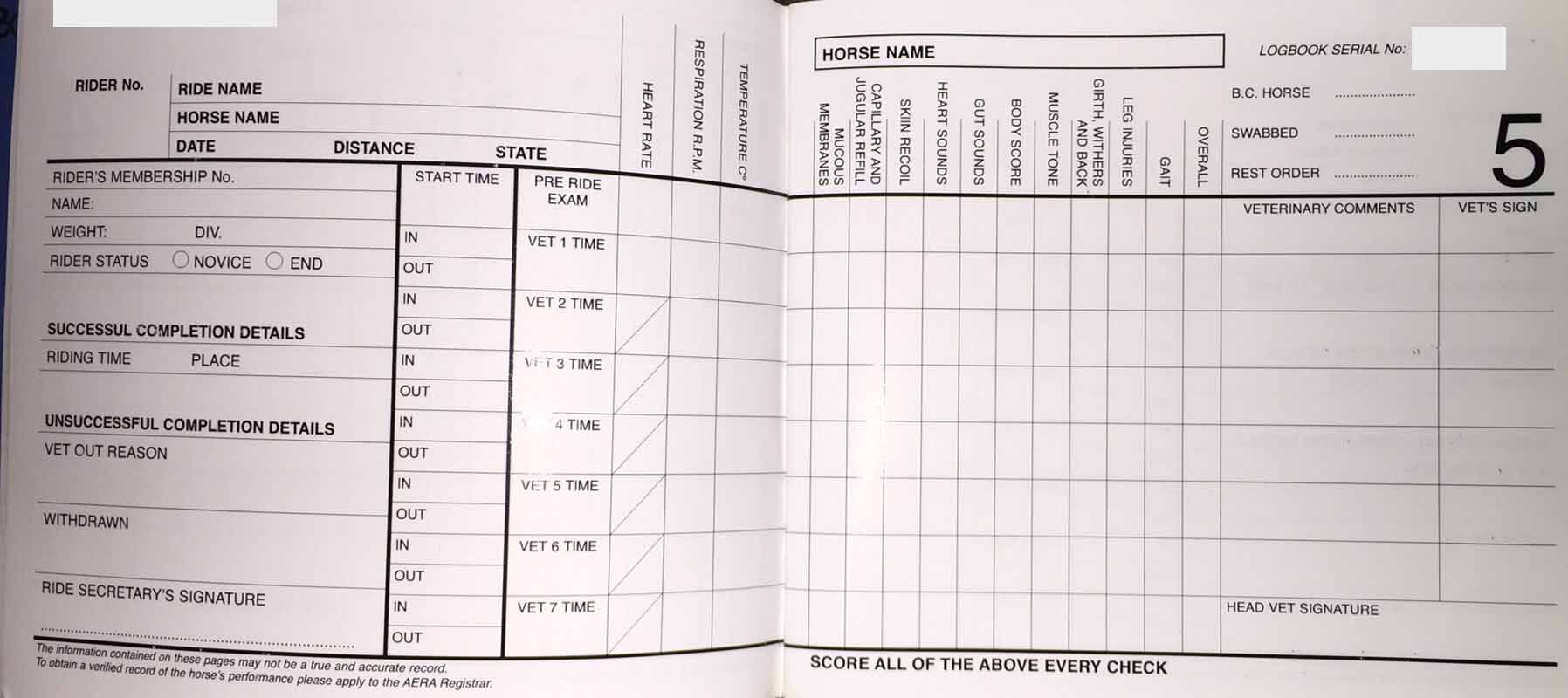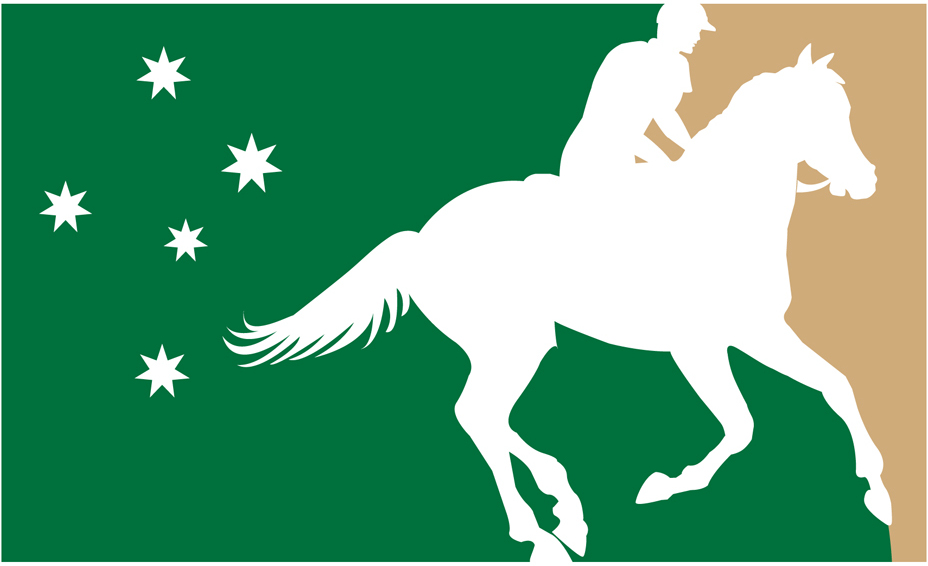Guide to Australian Endurance Vetting
The Veterinary Examination
The 4 Areas of Veterinary Examination
- TPR (mainly heart rate)
- Metabolics
- Injuries/Galls/Soreness
- Gait

The Logbook

Pre-Ride Examination
- Pre-ride examination includes the temperature, pulse and respiration, normally collected by TPR stewards or vet students. If the temperature is elevated (37.3⁰ C – 38.3 ⁰ C) the TPR should flag the horse for the vet to examine further and determine if there is a reason, and if the horse is ok to start or if it should not start this event (remember there is always another event and the vet must speak on behalf of the horse and its welfare), biosecurity is extremely important during an endurance event
- Body condition score is also judged at the pre-ride examination. The score must be a whole number from 1-5. If a horse is deemed too skinny or too fat to start a particular ride the vet at their discretion stop the horse from competing. If there is any doubt, check with the head veterinarian.
TPR
- The Temperature, Pulse (heart rate) and respiration will usually be taken by an accredited TPR steward at a standard AERA event.
- If using vet-gate-into-hold procedures the vet is responsible for the collection of all parameters (see vet-gate-into-hold info at the end)
Heart Rate
- The maximum heart rate(s) permissible for each ride type are pursuant to Table 7 and Table 10 of the AERA General Rules and dependent upon the ride control being used. The stop watch is started when the heart beat is audible and the count starts on the next heartbeat.
Maximum of 55 bpm
- The stop watch can be stopped at 15 seconds if the count is 13 or less, at 30 seconds if the count is 26 or less. In both cases the heart rate can be recorded at 52 bpm or less.
Maximum of 60 bpm
- The stop watch can be stopped at 15 seconds if the count is 15 or less, at 30 seconds if the count is 30 or less. In both cases the heart rate can be recorded at 60 bpm or less.Maximum of 64 bpm (FEI dual event if invoked)
Maximum of 64 bpm (FEI dual event if invoked)
- The stop watch can be stopped at 15 seconds if the count is 16 or less, at 30 seconds if the count is 32 or less. In both cases the heart rate can be recorded at 64 bpm or less.
- In all cases above, if the heart rate is above the stated maximum at 15 or 30 seconds respectively, or if the heart beat is irregular, difficult to hear or demonstrates murmurs, the count must be continued for the full minute.
- Should the examination of the heart rate be disrupted due to movement or excitement of the horse due to a disturbance which renders the examination impossible or inaccurate, the examination is stopped and recommenced when the horse is settled.
Respiration
- Although highly variable depending on the environment, nature of the horse and stage of the ride – it can be an indicator of distress. A respiratory rate-heart rate inversion may be an early clinical indicator of heat stroke/impending metabolic collapse. In this case other metabolic parameters need careful examination. Up to 25% of body heat is dissipated via respiration, this becomes very important once evaporative cooling limits are reached.
- Synchronous Diaphragmatic Flutter (“Thumps”), will cause the diaphragm to contract in time with the heart beat, therefore the respiratory rate will be the same as the heart rate (The Thumps is a metabolic condition for which a horse is eliminated from the ride and may require treatment).
Temperature
- This cardinal sign has significance related to microbial infection, heart rate, respiratory rate, ambient temperature, recent physical exertion including floating and humidity and needs to be interpreted in this context. Normal range is from 37.3⁰ C – 38.5⁰ C
- Horse’s with an elevated temperature pre-ride need to be inspected closely for signs of infectious diseases and isolated along with travel companions if required
- Biosecurity is very important at an endurance event and needs to be maintained. Horse health declarations and temperature logs and vaccination status are important considerations
- The temperature should always be taken at the pre-ride inspection as some horses have travelled a long way and may be developing pleuro pneumonia or carrying infectious diseases. The temperature may be taken during the ride if other metabolic signs are deteriorating, even then the relationship between core and rectal temp may be tenuous, especially if the anus is dilated. In hot humid climatic conditions it is useful to take it at every inspection to ensure adequate heat loss is occurring
Body Condition Score
The body score is only recorded once, and that is at the pre-ride inspection. The scores should be 1-5 with half scores permitted.

Body condition scoring (adapted from Carroll C.L and Huntington P.J. Body Condition scoring and weight estimation in horses.




